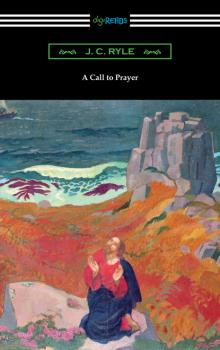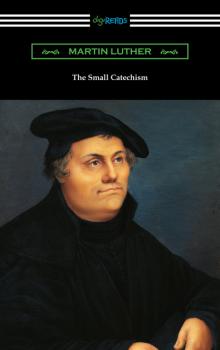ТОП просматриваемых книг сайта:
Религия: прочее
Различные книги в жанре Религия: прочее, доступные для чтения и скачиванияАннотация
First published in 1926, “Melchizedek and the Mystery of Fire” by Manly P. Hall is an in-depth examination of the role that fire plays in religion, mysticism, spirituality, and human anatomy. Hall was born in Ontario, Canada in 1901 and moved to Los Angeles, California in 1919. He was immediately drawn into the world of mysticism and esoteric philosophies. A lifetime of studying, writing and lecturing on the arcane and spiritual had begun and Hall became an important and influential figure in the metaphysical movement that gained in popularity in the United States in the 1920s. Hall would go on to write over 150 books and articles and give countless lectures and classes. In “Melchizedek and the Mystery of Fire”, Hall turns his formidable intellect to exploring the relationship of fire to ancient religions, spirituality, and the human body. Hall shows the powerful allegorical significance and meaning of fire in ancient symbols, alchemy, free masonry, early mystical Christianity, numerology, and in eastern religious traditions. Fire is also important in understanding man’s relationship with nature, god, and one’s own inner spirit. “Melchizedek and the Mystery of Fire” remains a fascinating and thought-provoking study on the timeless and powerful symbolism of fire in human history.
Аннотация
“How to Pray” is the inspiring treatise on prayer by R. A. Torrey, the famed American pastor, educator, writer, and evangelist. Born Reuben Archer Torrey in New Jersey in 1856, Torrey was educated at Yale University and Yale Divinity School before becoming a minister in Ohio. Torrey later joined Dwight L. Moody in his evangelical work in Chicago and became the superintendent of the Bible Institute of the Chicago Evangelization Society, now the Moody Bible Institute. In “How to Pray”, Torrey applies his impressive education and experience in guiding both the newly spiritual and the deeply religious to meaningful prayer. Torrey explains in style that is accessible to everyone what prayer is, what it can accomplish, and when in daily life one should devote themselves to this essential activity. He also explains the many obstacles that prevent the faithful from praying effectively and how the power of God can help overcome these obstacles. Written over a century ago, Torrey’s devotional guide is gracious, kind, and informative, and continues to aid generations of Christians in furthering their spiritual development.
Аннотация
Charles Haddon Spurgeon is one of the world’s most famous preachers. Born in Essex, England in 1834, he converted from the Anglican Church to the Baptist faith at the age of 15 and began teaching Sunday school the following year. While he never attended theology school, by the age of 22 he was most the famous preacher in all of London and went on to preach at the New Park Street Chapel, later the Metropolitan Tabernacle, for 38 years. Spurgeon was an important and influential figure in the Reformed Baptist tradition and is often referred to as the “Prince of Preachers”. Spurgeon was a frequent public speaker at various churches and meeting halls, sometimes giving ten sermons a week to thousands of listeners. He was also a prolific author, publishing books on prayer, devotionals, articles, poetry and hymns. In “All of Grace,” Spurgeon makes a personal plea to all the lost sinners to help them find their way back into the grace of God. In simple and eloquent language, he clearly presents the ultimate message of Christian salvation, that man has a need for grace and God alone can provide it. Spurgeon’s inspirational words continue to guide the faithful and all those seeking answers to this day.
Аннотация
“A Call to Prayer” is the inspiring and encouraging treatise on the importance of prayer by J. C. Ryle, the acclaimed 19th century English Anglican bishop, author, and first bishop of Liverpool. Ryle was beloved by many all over the world for his kind manner of preaching and writing and “A Call to Prayer” is full of his welcoming and affectionate tone. Ryle’s message is meant for everyone, both those who have been practicing their faith for decades and those new to religion, regardless of their age or social class. In “A Call to Prayer”, Ryle encourages the devout to dedicate themselves to prayer, for that is the only way to have access to the wonder and miracle of God. The best test of one’s status with God is the presence or absence of prayer in daily life. Ryle writes that “to be prayer-less is to be without Christ, without God, without grace, without hope, and without heaven.” This heartfelt plea to devote your time and energy in order to better your spiritual well-being and life in the eyes of God remains as powerful and persuasive as when it was first written.
Аннотация
First published in 1529, Martin Luther’s “The Small Catechism” was written for the education of children in religious doctrine. It reviews The Ten Commandments, The Lord’s Prayer, the Sacraments of Baptism, the Alter and the Eucharist, along with other important religious and biblical tenets in a clear, concise and easy to understand format. It has long been considered as one of Martin’s most important writings and is seen as an authoritative text on the beliefs of the Lutheran Church. “The Small Catechism” was required reading for confirmation into the church for centuries. Luther distilled the Church’s teachings down to their most essential elements so that pastors and parents alike can pass the Lutheran doctrine and tradition down to the next generation. Remarkable for its wealth of information in a condensed and accessible form, Luther’s masterpiece of religious instruction has continued to provide guidance and answers to both the young and old. “The Small Catechism” remains an important and essential addition to any collection of religious literature, as well as a useful and practical daily prayer book for families and churches. This edition includes a biographical afterword.
Аннотация
First published in 1892, “Steps to Christ” is the most popular and widely-read book by the American religious pioneer Ellen G. White. She was an influential and trailblazing figure who, along with her husband James White and Sabbatarian Adventist leader Joseph Bates, helped form the Seventh-Day Adventist Church and is considered one of the most significant figures in American religious history. White believed that she received visions and dreams from God and was viewed by many as a spiritual prophet. She was also a popular public speaker and a successful author, writing on a diverse number of topics, including theology, nutrition, creationism, agriculture, education, health, and the Christian lifestyle. In “Steps to Christ”, White addresses the very important issue of how to become and remain a Christian, a concern that is at the center of many of her writings. In this deeply personal and inspiring work, White guides the faithful in how to develop a life-long relationship with Jesus and discusses such issues as how to repent, how to find faith and forgiveness, and how to handle doubt. Readers will find comfort and guidance in this classic of Christian literature, which has been reprinted many times and translated into over 150 languages.
Аннотация
First published in 1910, “The Person and Work of the Holy Spirit” by R. A. Torrey is the important and influential collection of sermons by the American pastor, educator, writer, and evangelist. Born Reuben Archer Torrey in New Jersey in 1856, Torrey was educated at Yale University and Yale Divinity School before becoming a minister in Ohio. Torrey later joined Dwight L. Moody in his evangelical work in Chicago and became the superintendent of the Bible Institute of the Chicago Evangelization Society, now the Moody Bible Institute. Torrey traveled all over the world to preach from 1902 to 1907, visiting China, Japan, Australia, India, Great Britain, and Canada. “The Person and the Work of the Holy Spirit” is considered one of his most important works and is based on sermons that he gave during his extensive travels. Torrey demonstrates his detailed knowledge of the scripture as he explores the important question of “who is the Holy Spirit?” He then shows how the devout may better know the Holy Spirit and receive his power and blessing. Torrey’s lessons continue to guide and instruct the faithful over a century after they were written.
Аннотация
Written in the 16th century by a reform-minded Carmelite monk, “Dark Night of the Soul” is a treatise focusing on the metaphor of a dark night to represent a lonely phase in one’s personal spiritual life. Saint John was a Roman Catholic mystic and a Spanish poet, and this work reflects his mystical stages toward union with God. Divided into two books, the purification of the senses and the spirit, “Dark Night” describes these two phases and additionally explains the ten steps of the ladder of love, which was first expressed by Saint Thomas Aquinas. In Saint John’s poem, one comes to understand his belief in a benevolent God, outside of all thought or imagination, who we can only come to know through love. A profound description of absolution, desolation, progress, and love, “Dark Night of the Soul” is a powerful work that captures the discouragement of doubt, as it offers help through spiritual loneliness.
Аннотация
First Published in 1631, “The Bruised Reed” is the widely read and inspiring classic by Richard Sibbes, the 17th century English theologian and preacher. Sibbes was an important spiritual leader during the early days of the Anglican Church under Queen Elizabeth I. He was also a vocal supporter of traditional Puritan religious doctrine and encouraged the faithful to worship according to the English “Book of Common Prayer”. Sibbes was well-known during his life for his kindness, his messages of hope and forgiveness, and for his gentle and temperate style of preaching and writing. “The Bruised Reed” is the most well-known and enduring work by Sibbes and continues to be read all over the world. Inspired by a remark made by Jesus in Matthew 12 that “a bruised reed He will not break, and a smoldering wick He will not snuff out”, Sibbes explains that the foundation for a true Christian life may only be found in surrendering one’s life to God and putting faith in God’s plan for mankind. This timeless work of Christianity is cherished for its comforting and encouraging message that God will never abandon his followers and that the love of Christ is never wavering.
Аннотация
“Faith’s Checkbook” is a classic and inspirational work by Charles Haddon Spurgeon, one of the world’s most famous preachers. Born in Essex, England in 1834, he converted from the Anglican Church to the Baptist faith at the age of 15 and by the age of 22 he was well-known throughout London for his powerful and engaging style. Spurgeon went on to preach at the New Park Street Chapel, later the Metropolitan Tabernacle, for 38 years. He was an important and influential figure in the Reformed Baptist tradition and is often referred to as the “Prince of Preachers”. Spurgeon was a frequent public speaker at various churches and meeting halls, sometimes giving ten sermons a week to thousands of listeners. He was also a prolific author, publishing books on prayer, devotionals, articles, poetry and hymns. Published in 1888, “Faith’s Checkbook” is a practical daily devotional that aids the faithful in practicing prayer and developing behavior in order to fully realize God’s promises to mankind. Spurgeon’s encouraging words continue to be read and cherished by Christians the world over.










